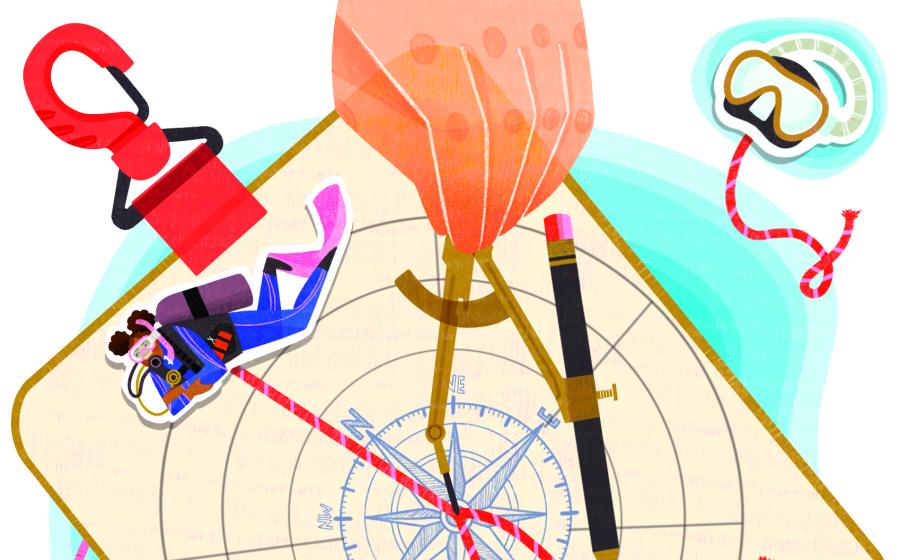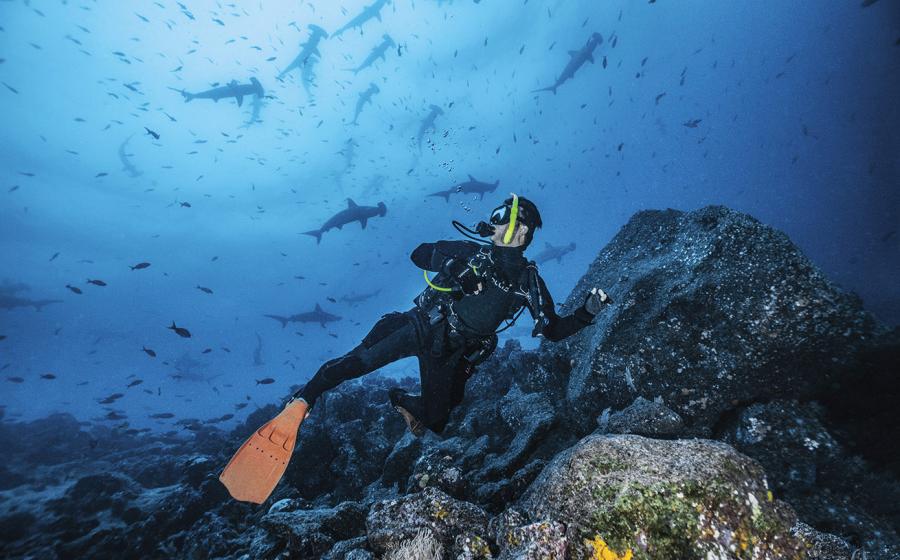Video Familiarity

Clay Wiseman
On a trip to South Australia a few years ago I found myself in Kangaroo Island about to embark on an adventure to shoot video of Leafy Sea Dragons. My dive partner and I asked the dive operator if he had a camera table on which we could assemble our rather complicated underwater video systems. He said confidently, "Sure mate, no worries" and he proceeded to lead us into the living room of his farmhouse. With rain pelting down outside, weak sunlight struggled through the window and Jim, our guide, pointed to his lace-covered living room table. My buddy and I struggled to set down our 70-pound cases as Jim flicked the switch of a single overhead 60watt light. In that muted light I had just 30 minutes to assemble my video system before we needed to leave for the dock from which we would depart in Jim's dive boat in search of one of the most unusual and beautiful underwater creatures in the world: the Leafy Sea Dragon. Time pressure was upon us because already it was 2PM and we needed to get out on the water soon if we were going to make the shoot work.
Undaunted, I began to unpack my equipment. Fortunately I had pre-prepared my underwater video equipment on my workbench at home so that when we arrived "down under" the assembly would be a snap. It has been my experience that waiting to set-up your video system until you are "on-site" can be disastrous. When the action is all of a sudden "in-your-face" it is easy to make mistakes during the on-site set-up and this is no way to start a dive trip. Taking the time to go through a full preliminary set-up when you are at home in a well lit and comfortable environment is time well spent.
In addition to extensive pre-prep I had made myself intimately familiar with my camcorder and underwater housing system through practice and of course by reading the (dreaded) manual(s) cover-to-cover (several times). Familiarity with your video system and preparedness, often more than any other factor, determine whether or not you bring home the footage. This being the case, I can strongly recommend that you undergo the following course of action to prepare yourself before you leave for the video shoot:
Bench Test
1. Completely assemble your underwater video system on your workbench paying particular attention to each user serviceable o-ring seal. Carefully remove and clean each of these o-rings as you assemble the system. 2. With the system assembled install the camcorder and take it through a dry run of all the functions you will need when filming in the field. In the very least check the record/standby function, the zoom/telephoto capability and the autofocus ability. If applicable also check that you have access to manual focus, white balance, shutter control and be sure to strike your lights. In addition to striking, immerse your light heads in a pitcher of water and check the burn time for each battery. Then recharge the batteries fully in preparation for the first dive of the trip. If your system has been idle for more than a couple of months take the lights through several cycles of fast charge/discharge while the heads are immersed in water to refresh the batteries to full capacity. 3. If you discover any malfunctioning controls or bad battery capacities contact the equipment manufacturer immediately and have spares sent or repairs initiated. Keep in mind that repairs take time. This is why you should assemble and test your equipment with plenty of time left over before you hit the road. 4. With all of your equipment operational on the bench you can confidently break it down and pack it piece by piece into a foam filled travel case. Carrying spare batteries and o-ring kits as well as replacement circuit boards is also strongly recommended.
With the confidence under your belt associated with the successful bench test you should feel that setting up on the other end will be a snap even if the process has to happen on a rolling boat or in a poorly lit farm house on Kangaroo Island.
On Site Feeling confident, I assembled my video system in that farmhouse under a single 60-watt light bulb and did it in under 30 minutes. All the functions of the camcorder worked perfectly just as they did during the bench test. And when we finally got underwater and there were sea dragons "in-my-face" my familiarity with the video system and my preparedness paid off during that late afternoon dive with sea dragons off the shore of Kangaroo Island in South Australia.










